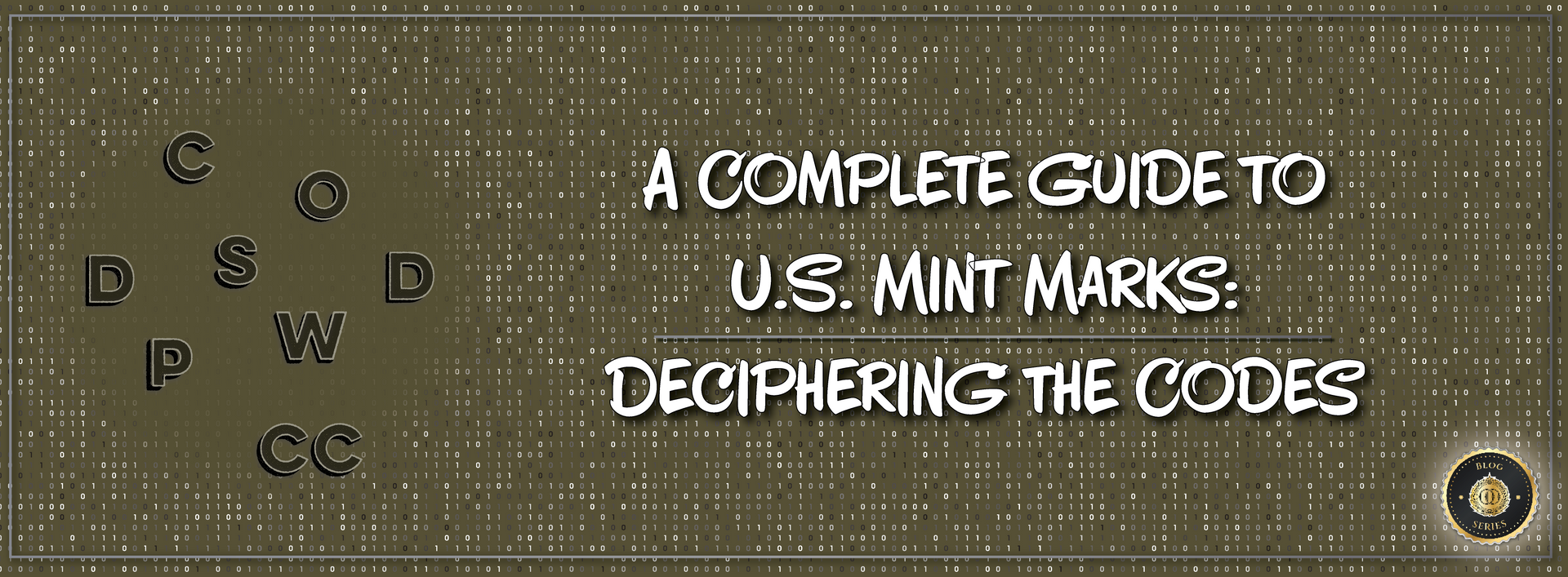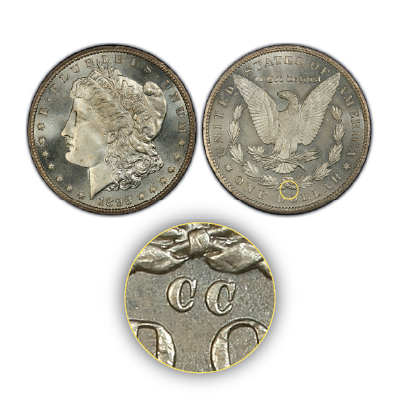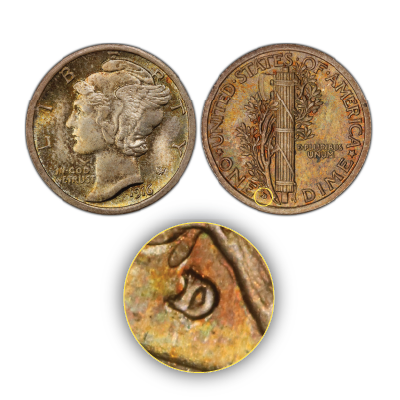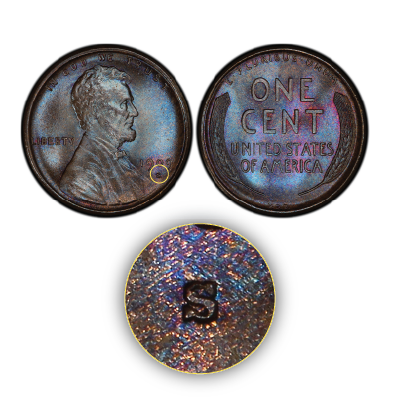
Ever wondered what those tiny letters on your coins mean? From “CC” to “W,” mint marks reveal where a coin was struck — and often how valuable it might be. These small stamps tell a big story, unlocking everything from mintage history to market worth. Whether you’re just starting your collection or looking to deepen your numismatic expertise, understanding mint marks is essential.
In this complete guide, part of our American Legacy blog series, we’ll help you decipher the codes
— exploring mint mark history, their impact on coin value, where to find them, and what sets privy marks apart.
What Is a Mint Mark?
A mint mark is a letter stamped onto a coin indicating which U.S. Mint facility produced it. These marks help identify coins from different locations and are a key factor in determining a coin’s scarcity and desirability.
Here are the most common U.S. mint marks:
P – Philadelphia Mint (now the most common; used since 1793 but regularly added to coins only after 1979)
D – Denver Mint
S – San Francisco Mint
W – West Point Mint (used mainly on bullion and commemorative coins)
CC – Carson City Mint (1870–1893; highly collectible)
O – New Orleans Mint (1838–1909)
Pro Tip: Coins from historic mints like Carson City (CC) or New Orleans (O) often command a premium because of their limited mintage and frontier-era legacy.
A Brief History of Mint Marks
Mint marks first appeared on U.S. coins in 1838, starting with gold coinage. Until then, the Philadelphia Mint handled all coin production and didn’t use a mint mark. As the country expanded and additional mints were built to meet demand, mint marks became essential for tracking and verifying coin origin.
Key Moments in Mint Mark History:
1838: First mint marks used on gold coins.
1860s: Expanded use across silver denominations.
1942–1945: Silver “war nickels” featured large mint marks above Monticello to signify higher silver content.
1965–1967: Mint marks were removed from all U.S. coins to discourage hoarding during a coin shortage.
1968: Mint marks were reinstated — and collectors rejoiced.
Where to Find Mint Marks
Depending on the coin series and year, mint marks can appear in different places:
- Lincoln Cents – On the obverse, just below the date.
- Jefferson Nickels – Right of Jefferson’s bust (modern) or above Monticello (silver war nickels).
- Washington Quarters – To the right of Washington’s ponytail on the obverse.
- Morgan and Peace Dollars – On the reverse, just beneath the wreath or tail feathers.
- American Silver Eagles – Only collector versions display mint marks, typically on the reverse.
How Mint Marks Impact Coin Value
Mint marks can dramatically affect a coin’s value. Coins from mints with low production volumes — especially Carson City (CC), New Orleans (O), and early San Francisco (S) coins — are especially prized.
Famous Mint Mark Examples:
Fun Fact:
From 1965 to 1967, no U.S. coins bore mint marks due to fears of coin hoarding. This short-lived policy was reversed in 1968.
What Is a Privy Mark?
While mint marks indicate where a coin was made, privy marks are small symbols added for commemorative or design purposes. They don’t represent a mint facility but often honor a historic event, anniversary, or series.
Example: In 2024, the U.S. Mint released a Silver Eagle with a special privy mark celebrating the 230th anniversary of the Flowing Hair design, the first official U.S. coin. These limited-edition coins have become instant collector favorites.
Tips for Collectors: Making the Most of Mint & Privy Marks
- Do Your Research – Study U.S. Mint history and identify key mint mark years.
- Hunt for Varieties – Look for repunched mint marks (RPMs) or double dies.
- Consider Certified Coins – PCGS or NGC-graded coins help confirm authenticity and condition.
- Watch the U.S. Mint – Follow new commemorative releases and special-edition coins.
- Track Your Finds – Keep a log of coins, mint marks, and grades to track value over time.
Why Mint Marks Matter
Mint marks and privy marks may be small, but they carry massive significance in the world of coin collecting. From the dusty vaults of the Carson City Mint to modern privy releases honoring American milestones, these marks offer a deeper way to connect with U.S. history and identify collectible treasures.
So the next time you pick up a coin, look closer — those little letters might just unlock your next great discovery.




